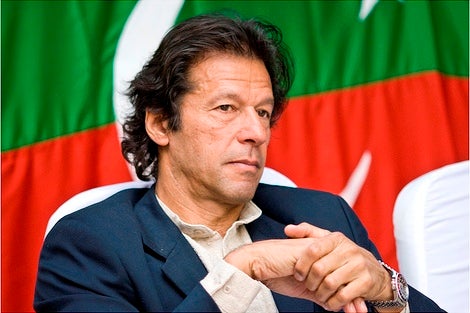Summary
Pakistan is the country most affected by the COVID-19 pandemic in South Asia. This paper examines the steps taken by the Imran Khan government to contain the virus and tide its impact, as well as reviews the challenges confronting the country.
On 23 March 2020, Pakistan’s interior ministry authorised the deployment of military troops to stem the spread of COVID-19. The military has been tasked to help provinces enforce lockdowns and bolster the health infrastructure. This is part of a series of urgent measures ranging from restricting the movement of people to the announcement of a relief package to both contain the virus and tide the impact of the pandemic in Pakistan. These efforts notwithstanding, there are serious concerns that the lack of medical resources, coupled with hesitation on the part of the federal government to impose a nation-wide lockdown, will pose a major challenge in the coming weeks and months.
With the number of confirmed COVID-19 cases in Pakistan having crossed 990 at the point of writing (25 March 2020), it is the country most affected by the pandemic in South Asia. Particularly alarming is the speed at which the virus has spread. The number of confirmed cases has quadrupled in the last week, and seven deaths have been reported thus far.
The challenges confronting Pakistan are not unique to it. The rapid spread of COVID-19 in the United States and Europe reflects how the virus is testing health resources and economic structures globally. Like a number of other countries, Pakistan’s health infrastructure is, unfortunately, not equipped to deal with the projected spread of this disease. Pakistan only has 0.6 hospital beds per 1,000 people and 2,200 ventilators, and does not have adequate quarantine facilities, testing laboratories and personal protective equipment (PPE) for medical staff. The fact that Pakistan is one of only three countries in the world that has failed to stop the transmission of polio, a viral disease, demonstrates how its health system has struggled to handle the outbreak of infectious diseases. Indeed, official concerns over the ability to deal with the outbreak of COVID-19 led, in part, to Pakistan deciding not to evacuate its students from Wuhan.
The National Disaster Management Authority has announced that it plans to acquire 10,000 more ventilators, 50,000 testing kits and adequate PPE in the coming weeks. It is looking to acquire them primarily from China. During the peak of the pandemic in China, Pakistan had made the decision to publicly express its solidarity with China by not evacuating its students and not discontinuing flights from China. It now looks to China to reciprocate with medical supplies and technical assistance. Pakistan’s President Arif Alvi visited China on 16 March 2020 to demonstrate support for China’s battle against COVID-19 and to discuss Chinese assistance for Pakistan. On its part, China is keen to position itself as a country that provides much-needed medical support to other countries grappling with the pandemic. It has, for instance, sent medical personnel to Italy. While China will no doubt be keen to assist Pakistan, it remains to be seen how much medical and technical assistance it is able to provide, given concerns within China of a potential second wave of infections.
Hence, limiting the spread of the virus is crucial. The Pakistani government has thus far resisted imposing a total lockdown in the country and has advised individuals who are unwell to self-quarantine. Prime Minister Imran Khan was candid in stating that he was concerned by the economic toll of a lockdown. He warned that it would particularly affect “twenty-five percent of Pakistanis [who] are below the poverty-line”. He highlighted the impact that this would have on daily wage earners, rickshaw drivers and small shopkeepers and stressed that, “if Pakistan was in a similar [financial] condition as Italy, France, America and England, I would completely lockdown Pakistan.”
The rate at which the virus is spreading has, however, forced the provinces to impose restrictions on movement. With almost half the cases of COVID-19 detected in Sindh, the province, which has an estimated population of 50 million, is the epicentre of the coronavirus in Pakistan. The government of Sindh has imposed a 15-day lockdown. It has also made important decisions to lighten the economic burden on its people. For instance, it has directed all state-agencies providing essential services to suspend billing for consumers in the lower economic strata.
While the federal government continues to resist declaring a complete shutdown, it has promised a Rs1.13 trillion (S$9.08 billion) relief package in anticipation of the impact of provincial shutdowns and the wider economic impact of COVID-19. While details on the mechanisms for the disbursing of the money are awaited, the package promises a welcome relief to individuals like daily-wage earners who will be the hardest-hit in the coming weeks as well as industry. Particularly noteworthy is the fact that Rs200 billion (S$1.8 billion) has been allocated for direct support to lower-income groups, and some 5.2 million people who are registered as recipients of financial assistance under the Benazir Income Support Programme will now be given stipends of Rs3,000 (S$27) a month. For industry, the package promises a deferment of interest payments for exporters and the slashing of the sales tax.
Overall, while the federal government has made important gestures towards mediating the economic impact of COVID-19, tough decisions need to be made quickly about how to contain the spread of the disease. The prevailing health infrastructure is ill-equipped to deal with the rate at which the virus is spreading.
. . . . .
Associate Professor Iqbal Singh Sevea is a Visiting Research Associate Professor at the Institute of South Asian Studies (ISAS), an autonomous research institute at the National University of Singapore (NUS). He can be contacted at iqbal@nus.edu.sg. The author bears full responsibility for the facts cited and opinions expressed in this paper.
-
 More From :
More From :
-
 Tags :
Tags :
-
 Download PDF
Download PDF



